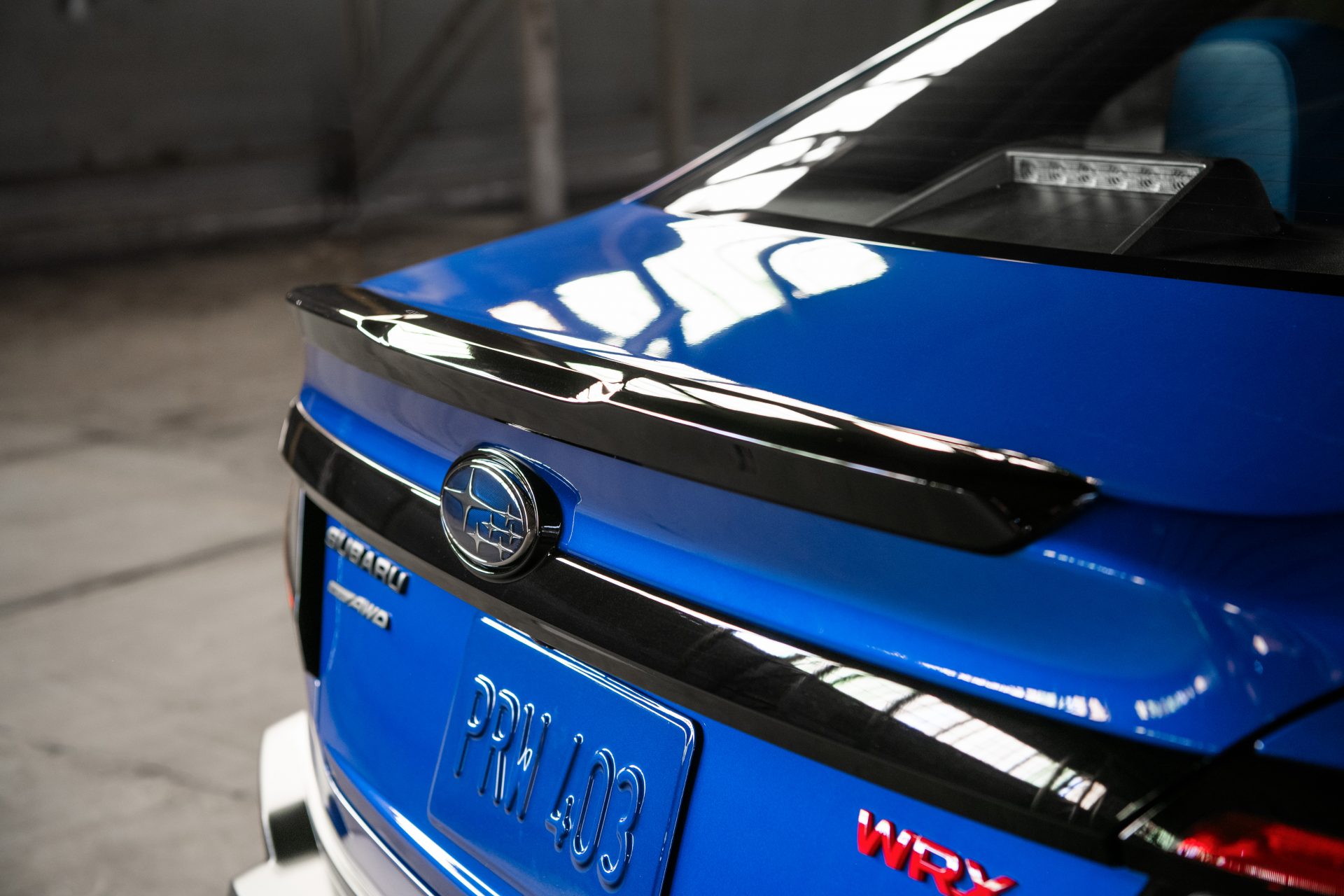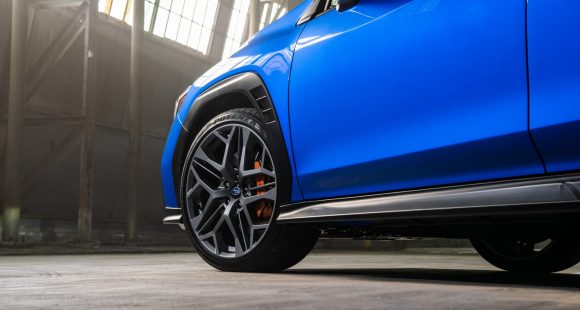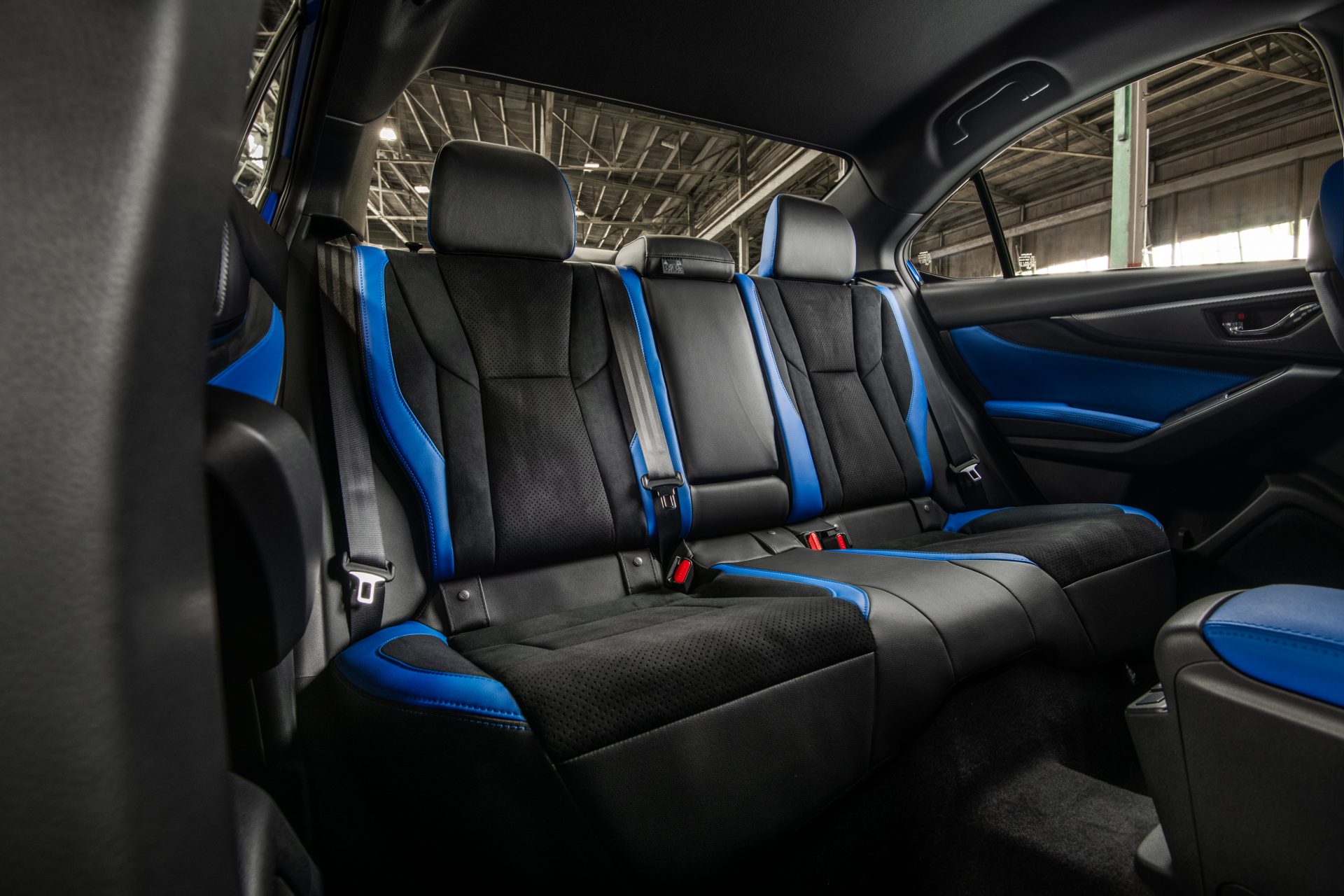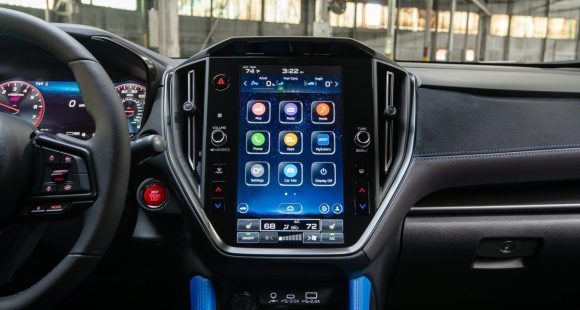2011 Ford Edge
For a brand known for its once top selling body-on-frame explorer SUV, the arrival of the 2006 Ford Edge midsize crossover utility really raised eyebrows. But Ford was just responding to the reality of surging gas prices and a flood of lighter, more efficient CUVs from import rivals. So, the Edge was a gamble that paid off. Now, Ford is doubling down with a mid-cycle edge revamp of the Edge. So let’s see if it’s again a winner.
Typical of what car makers call a freshening, the 2011 Edge maintains most of its exterior sheet metal, with major changes largely limited to front and rear fascias.
But, the addition of a big drop-jaw Ford-truck style grille, more expressive headlamp housings, and beefier wheels, does deliver a fresh impression, and makes the modern stance of the Edge even more so.
But, Ford smartly paid a lot more attention to upgrading the interior of the Edge. The instrument panel is improved in style, in fit and finish, with softer materials. Taurus influence is unmistakable.
Our well-equipped Edge Limited also included the latest Sync system which controls climate, stereo, navigation, and other functions.
Ford’s Sync voice recognition system has now morphed into MyFord Touch and it has three screens: two colorful info screens inside the gauge cluster, and a large touch screen in the center dash. Now it looks very much like a big smart phone display.
 And like a smart phone, there’s no tactile feel, so you have to look at the screen when you actually want to make a touch selection. We find that distracting—and it’s also annoying, especially when the system locks up like it did for us.
And like a smart phone, there’s no tactile feel, so you have to look at the screen when you actually want to make a touch selection. We find that distracting—and it’s also annoying, especially when the system locks up like it did for us.
Now there are redundant controls for stereo and climate below, but they’re very sensitive, so again you have to look at what you’re touching.
On the other hand, Sync’s voice command system and Bluetooth connectivity are improved, but they’re still just a little fussy.
The two gauge screens are controlled by five-way switches on the steering wheel. Of all the controls, they are the most intuitive to use.
Available SD-card based navigation adds some neat tricks, too, like buildings appearing in 3D. But the best news here is the addition of SYNC TDI, an On-Star-like voice-prompt navigation feature.
Systems like Sync and MyFord Touch may very well be the future of automotive controls. Still, we also hope efforts continue to make voice command systems more intuitive, since you don’t have to take your eyes off the road to use those.
Edge remains a five-passenger crossover. The new front seats are more comfortable but could still use more lateral support.
Ford’s unique door keypad is standard on all but base trim. Blind Spot Monitoring is an option.
 Rear seat space and comfort remain excellent, even for six-footers. That still leaves room for 32.2 cubic feet of cargo space behind a large opening hatch. And, folding the seats down brings that space to a competitive 68.9 cubic feet.
Rear seat space and comfort remain excellent, even for six-footers. That still leaves room for 32.2 cubic feet of cargo space behind a large opening hatch. And, folding the seats down brings that space to a competitive 68.9 cubic feet.
Base power for the Edge is still a 3.5-liter V6. But it’s smoother, with 285 horsepower, up 20, and 253 lb-ft of torque, up three.
New is the Mustang’s 3.7-liter V6 in the Edge Sport with 305-horsepower and 280 lb-ft of torque.
Front-drive six-speed automatics are fitted to both sixes with Sport trim adding paddle shifters. All-wheel drive adds new Hill Start Assist.
Still to come is an Edge Ecoboost, with a direct-injected, turbocharged 2.0-liter I-4. But, even without Ecoboost, Edge made gains in fuel economy.
Our front-drive 3.5 has government fuel economy ratings of 19 city, 27 highway. That’s up one in the city and two on the highway. On our test loop, we averaged 22.8 mpg of regular.
The Edge’s moderate Energy Impact Score of 15.6 barrels of oil per annum, and 8.5-ton Carbon Footprint, mirror those of the Toyota Venza V6.
Edge track performance was well above par: zero to 60 in 7.1 seconds, and the quarter mile in 15.7 seconds at 93 miles per hour. Power was best in the upper revs.
There was a fair amount of body roll through the slalom, but it had no notable affect on stability. The Edge Sport with its 22-inch wheels does even better.
The all-disc braking system is also new, from booster, to calipers, to first time Brake Assist. Our average 60-to-0 stopping distance of 129 feet was far better than the 146 feet in our previous test. Still, the 2011 Edge exhibited moderate fade and nose dive.
The Edge is a solid long distance highway tourer. Improved sound insulation, including acoustic glass, complement powertrain tweaks for impressively low noise at speed.
Pricing for a base Edge SE starts at $27,995. Our front drive Limited begins at $34,995, and the Sport at $36,995. All-wheel drive adds $1,850 more.
The improvements in the 2011 Ford Edge are extremely well-thought out. More tech, more comfort, and more all-around performance, without compromising its already strong five-passenger utility traits. It’s a perfect pairing for the all-new seven-passenger Explorer due soon. And that will make even more of a competitive edge for Ford’s rivals to worry about.
Specifications
- Engine: 3.5-Liter V6
- Horsepower: 285
- Torque: 253 Lb Feet
- 0-60 MPH: 7.1 Seconds
- 1/4 Mile: 15.7 Seconds @ 93 MPH
- 60-0 MPH: 129 Feet
- EPA: 19 MPG City/ 27 MPG Highway
- Mixed Loop: 22.8 MPG
- Energy Impact: 15.6 Barrels Oil/Yr
- CO2 Emissions: 8.5 Tons/Yr
2025 Subaru WRX tS
Subaru’s “World Rally eXperimental” Gets Tecnica-Tuned Tech
Building on its global rally heritage, WRX has been a standalone Subaru nameplate, marketed separately from garden variety Impreza, for two generations now. And while the current WRX still lacks the full STI treatment, this WRX tS serves up some of that high-performance spice we’ve been longing for.
Before we go flat out into our Track Test of this 2025 Subaru WRX tS, lets open the Subaru dictionary so we’re all on the same page. “tS” stands for “tuned by STI;” and “STI” is an acronym for “Subaru Tecnica International,” the brand’s high-performance sub-group best known for upgrading the WRX— oh, that stands for “World Rally eXperimental,” in case you didn’t know.
All that said, STI has been largely dormant for this WRX generation, but this tS sprinkles more of their engineering magic into the mix. No, that doesn’t mean extra power, but does mean significant chassis-related improvements.
First, electronically controlled dampers, adjustable through the 11.6-inch tablet-style infotainment screen. That meant a softer “comfort” mode on the 10+ hour commute to and from Savannah’s Roebling Road Raceway. But once we were there, it was the firmer “Sport+” setting all the way, heightening response from the WRX’s throttle and already quick dual-pinion power steering system. There’s still some body roll for rally-esque weight transfer, but it’s well sorted and provides the “toss-ability” you want in a WRX.
Though if you do autocross your tS, which we implore you to do, you might feel the six-piston front, two-piston rear Brembo brakes first. The bite is strong, giving good rotation in the corners and plenty of “halt” for this 3,400 lb. compact with minimal fade, keeping us on track all week…until some unfortunate winter weather passed overhead. No worries here, as Subaru’s Symmetrical All-Wheel-Drive system got us to the track for some powdered deserts: Frosted donuts served up Michelin style, a set of winter tires different from the grippy Bridgestone Potenza S007 rubber the tS typically rides on. Some prior hot laps of California’s Sonoma Raceway gave credence to those Bridgestones, and showed us what this hot-compact can do in ideal conditions.
It’s well sorted and provides the “toss-ability” you want in a WRX.
Other tS enhancements are cabin-based, namely these beautiful blue Recaros. Most of our staff appreciated their moderately-aggressive bolstering on both street and track. And they’re even heated, too. Another tS-only appointment is this 12.3-inch digital gauge display. It mimics the standard analog gauges with some additional info, but can switch to a navigation mode for more convenient route guidance.
We do wish our tS came in the new Galaxy Purple or the trademark World Rally Blue, but this Crystal White paint wasn’t too shabby, contrasting its Cherry Blossom Red badging and blacked-out lip spoiler. Otherwise, the tS is like any other WRX, down to the hood scoop funneling air to the top-mounted intercooler.
Underneath is the same turbocharged 2.4-liter flat-four in all other trims, boxing at 271 horsepower and 258 lb-ft of torque. The freak winter weather stopped straight-line testing, but a 0-60 time estimate of 5.5 seconds is about as spry as you realistically need, pulling strong through most of the tach; though the 6,000 RPM redline required attentive shifting of the six-speed box, which the tS comes exclusively with. The throws are precise, if a little long, and the clutch is wonderfully weighted.
With discontinuation of the Base trim, pricing for the WRX now starts with Premium at $36,920. The tS is at the top of the lineup with the automatic-only GT, both starting at $46,875. All WRXs continue to be made in Gunma, Japan.
If you’re an enthusiast itching to do the tuning yourself, perhaps the 2025 Subaru WRX tS is not for you. But if you want a plug-and-play experience, this is it. While it won’t exactly bestow the loose-cannon, top-level driving skills exhibited by famous WRC drivers upon you, the tS moves this WRX’s game in a direction we’ve so desperately wanted Subaru to take.
Specifications
As Tested
- Engine: 2.4-liter flat-four
- Tranmission: 6-speed manual
- Horsepower: 271
- Torque: 258 lb-ft











































